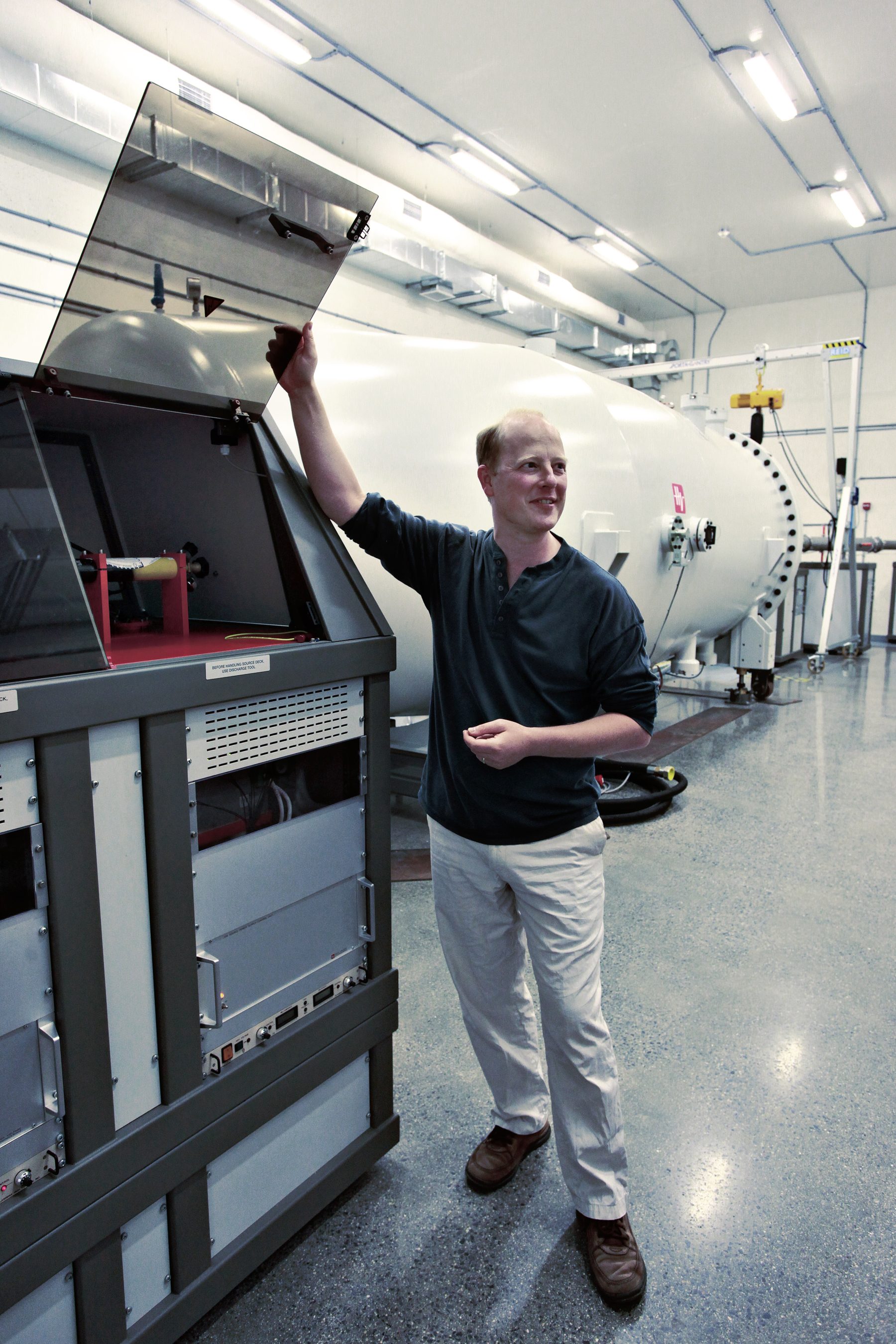While most people think of nuclear reactor plants as massive facilities, the biggest news in nuclear is the development of Small Modular Reactors. They have the potential to change how nuclear power is delivered, and Department of Mechanical and Materials Engineering researchers Mark Daymond and Suraj Persaud of the Queen’s Nuclear Materials Group are studying ways to make these new reactors safer and more efficient, and ensure a successful carbon-friendly technology for Canadians.
Small Modular Reactors (SMRs) are designed to be manufactured at a factory, and then shipped to a location for final assembly, providing significant benefits to users. SMR is a broad term, covering multiple possible designs of small reactors. Some are simply scaled down versions of current reactor designs, while others have more significant changes in design.

“SMRs can be produced more cost effectively, and because each unit is smaller than existing plants, their delivery can be scaled, customising to meet power demands at the site,” said Daymond. “For example, remote mining operations currently fly diesel into their operations, a costly method that results in substantial greenhouse gas emissions. A nuclear power source scaled to a mine’s needs would be more cost effective while reducing their impact on the environment.” With their flexibility, SMRs can integrate with renewable energy generation, providing a reliable base load.
Daymond and Persaud recently received funding from the Queen’s Wicked Ideas competition to study the use of molten salt as a replacement coolant for water in these reactors. “You don’t have to pressurize molten salt, which makes it safer, and also more cost effective,” said Persaud. “It’s stable and more efficient in terms of heat transfer. The systems are being engineered and designed to reduce any risks of even minimal failures, however if a leak does occur, there is no steam or gaseous release, rather the molten salt simply solidifies and can be safely isolated and disposed.” The alloys used to make the structural components of such reactors don’t behave the same way with salt as they do in water, and while there has been some research in this area, Daymond and Persaud are taking it one step further by introducing simultaneous radiation to assess degradation levels in more realistic SMR conditions.
The work will take place at the Queen’s Reactor Materials Testing Laboratory, a state-of-the-art facility that includes a proton and helium accelerator to introduce radiation damage and assess the changes to the SMR materials. “The Reactor Materials Testing Laboratory is one of perhaps only three places in the world with the capability to do this type of experiment,” said Persaud. “That, combined with our complementary interests in chemistry and materials and radiation damage, makes this project exceptionally unique and exciting.”
Conservative estimates from Natural Resources Canada place the value for SMRs in Canada to be $5.3 billion between 2025 and 2040, and $150 billion globally over the same period. Daymond noted that the growing impact of climate change makes SMRs even more important. “Nuclear power produces very little carbon dioxide, and SMRs have great potential to help us move away from natural gas and other products that are changing our climate,” he said. “Our work will contribute to new ways of producing power while protecting our planet.”
